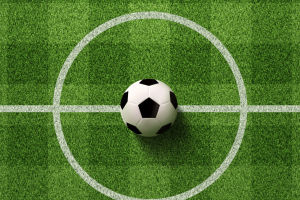Billiards, an ancient and sophisticated sport, offers a variety of different types of matches, such as snooker, eight-ball (often referred to as sixteen-colored balls), and Chinese billiards.
This article provides a detailed description of the numerical correspondence of colors in billiards to enhance your understanding and appreciation of the sport.
Snooker
Snooker is a unique type of billiards that uses balls differentiated only by color, without numerical markings. The game features 22 balls: one white cue ball, 15 red balls, and six colored balls. Each colored ball has a specific point value associated with it:
- Yellow: 2 points
- Green: 3 points
- Brown: 4 points
- Blue: 5 points
- Pink: 6 points
- Black: 7 points
In snooker, players must demonstrate great skill to pot the balls into the pockets in a specific order. The typical sequence involves potting a red ball, followed by a colored ball, and repeating this pattern until all the red balls are potted. Afterward, players must pot the colored balls in ascending order of their point values. Although snooker balls do not have numbers, players must accurately judge the direction and power of their shots based on the color of the balls.
Eight-Ball (Sixteen-Colored Balls)
The eight-ball game, commonly referred to as the sixteen-colored balls game, uses 16 balls: one white cue ball and 15 colored balls. These colored balls are divided into two groups: solids and stripes. Each group contains seven balls, and there is one black ball, which is the 8-ball. The numerical correspondence of the colors is as follows:
- Ball 1: Yellow (solid)
- Ball 2: Blue (solid)
- Ball 3: Red (solid)
- Ball 4: Purple (solid)
- Ball 5: Orange (solid)
- Ball 6: Green (solid)
- Ball 7: Brown (solid)
- Ball 8: Black
- Ball 9: Yellow with a white stripe
- Ball 10: Blue with a white stripe
- Ball 11: Red with a white stripe
- Ball 12: Purple with a white stripe
- Ball 13: Orange with a white stripe
- Ball 14: Green with a white stripe
- Ball 15: Brown with a white stripe
In eight-ball, players are assigned either the solid-colored balls (1-7) or the striped balls (9-15) and must pot all their designated balls before potting the 8-ball to win the game.
Chinese Billiards
Chinese billiards, also known as Chinese pool, uses a similar setup to the eight-ball game, with 16 balls: one white cue ball and 15 colored balls. The colors and numbers of these balls are identical to those used in the sixteen-colored balls game. Players in Chinese billiards must also pot their designated group of balls (solids or stripes) before potting the 8-ball to secure a victory.
Nine-Ball
Nine-ball is another popular billiards game that uses 10 balls: one white cue ball and nine colored balls. The balls are numbered from 1 to 9, and the objective is to pot the balls in numerical order. The numerical correspondence of the colors in nine-ball is as follows:
- Ball 1: Yellow
- Ball 2: Blue
- Ball 3: Red
- Ball 4: Purple
- Ball 5: Orange
- Ball 6: Green
- Ball 7: Brown
- Ball 8: Black
- Ball 9: Yellow with a white stripe
In nine-ball, players must strike the lowest-numbered ball on the table first, but they can pot any ball during their turn. The game is won by legally potting the 9-ball.


